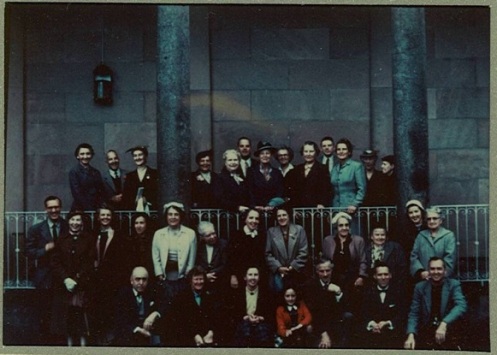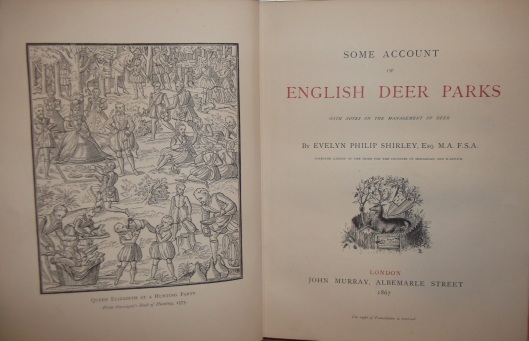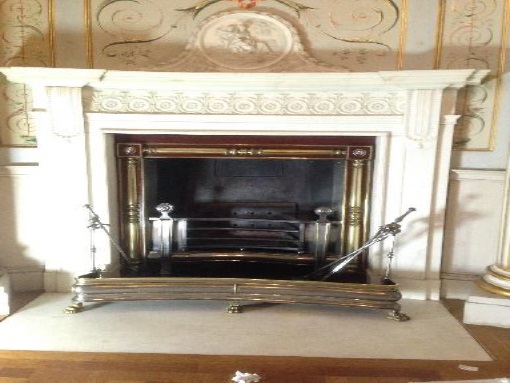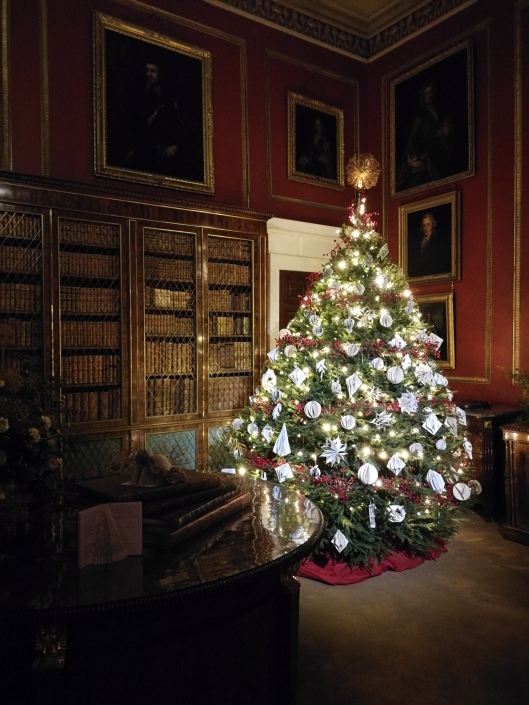2019 marks a special wedding anniversary for the 8th Lord and Lady Berwick, who married 100 years ago. For two years following their marriage, the couple lived at Cronkhill, an Italianate villa designed by John Nash on the Attingham estate.

The 8th Lord and Lady Berwick on their wedding day.
Cronkhill will be open on Friday the 13th and Sunday 15th of September 2019. We will be displaying artefacts from the wedding and the flower arranging volunteers will replicate the beautiful floral archway over the gateway made by tenants to welcome Lord and Lady Berwick home in September 1919. They’ve also made a replica of Lady Berwick’s wedding bouquet and some lovely stephanotis flower buttonholes, like those worn by Lord Berwick, which visitors can buy as souvenirs. To book a place, please click here.

Cronkhill.
Teresa Hulton (1890-1972) married Thomas, the 8th Lord Berwick (1877-1947), at the Church of Santi Giovanni e Paolo, near the Hulton family home in Venice. Lord Berwick and Teresa Hulton had met before the First World War and continued to correspond throughout the war. To discover more about their lives during the war, please click here.
The marriage was solemnised by the Reverend Canon Knollys, British Chaplain at Florence. Teresa and Thomas had wanted to marry on the 28th of June 1919 but Canon Knollys could not be there until the 30th.
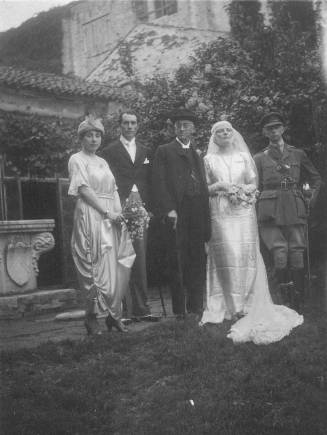
A wedding photograph showing left to right: Gioconda (Teresa’s sister and bridesmaid), Reginald Bridgeman (best man), Canon Knollys, Teresa, Thomas.
They had other problems in the run up to the wedding, including a printers’ strike meaning the Hultons might have to hand write invitations and the dressmaker not finishing Teresa’s dress until shortly before the wedding. Sadly, in the wedding photographs it appears to be creased after being quickly unfolded!

Sadly, the fold creases in the wedding dress are clearly visible in this photograph.
On the 17th of June, Teresa wrote to Lord Berwick that: ‘My wedding dress is not even begun yet.’ She worried that ‘I probably shall wear a night gown or some old rag.’ Very disappointing when the silver brocade dress cost £925!
Unfortunately Teresa was suffering from one of her frequent migraines on her wedding day. Her mother, Costanza, wrote: ‘I felt SO SORRY for you on the day of the wedding, and it must have been very trying for you to have to give explanations.‘
Thomas wore his Shropshire Yeomanry Captain’s uniform for his wedding. His fragrant stephanotis flower buttonhole symbolises marital happiness.

The 8th Lord Berwick in uniform on his wedding day.
Although Teresa’s wedding dress does not survive, perhaps having been returned to the dressmaker or sold, fortunately Teresa’s appliqué Brussels lace mittens and wedding wreath are preserved and will be displayed at Cronkhill for the September 2019 opening. The orange blossom wreath symbolises virtue and fertility and artificial blossoms made of wax, paper and stiffened cotton were popular with brides following Queen Victoria’s lead.

A display in the Drawing Room at Attingham created to celebrate the 1919 wedding. The display features the original lace mittens and wedding wreath worn by Lady Berwick as well as replicas of the wreath and bouquet.
A report of the wedding states that, following the tradition of ‘something old, something new,’ Teresa wore ‘a train of Brussels lace, which her mother and grandmother had worn on their wedding days.’ Teresa’s sister, Giconda, was her only bridesmaid and ‘wore a pale grey satin dress embroidered in gold.’
The wedding reception was held at the Palazzo Contarini Dal Zaffo, home of a family friend, because the Hulton’s home was still not repaired following bomb damage during the First World War.
Much of the honeymoon was spent at Lake Garda. They also travelled through Switzerland where they went on motor trips and picnicked in the countryside.

Lord and Lady Berwick on their honeymoon.
On their way to Shropshire the couple stayed in Paris, where Teresa’s friend Lady Helen D’Abernon gave a lovely glimpse of them at the Ritz:
‘from their aspect & from a tiny talk with Teresa, I gathered a very happy impression of mutual devotion & understanding & content. I never saw T. look handsomer.’

Teresa may possibly be wearing her diadem in this image.
At first the newlyweds lived in Cronkhill, since Attingham Hall was let by the Dutch-American Van Bergen family as it had been throughout the war. The couple arrived at Cronkhill to find the gateway decorated by the estate tenants with a floral arch to welcome them home. The tenants also presented them with a silver tea set now at Attingham and often displayed in the Sultana Room.
As in Italy, Teresa enjoyed helping the community. She regularly attended Women’s Institute meetings and arranged fêtes and parties for the tenants. She enjoyed developing the gardens at Cronkhill.

Lady Berwick in the Dining Room at Cronkhill.
The Van Bergens moved out of Attingham in March 1920. Initially the Berwicks tried to find a new tenant for Attingham. However, due to the servant shortage after the war and the size of the mansion, finding a tenant was difficult. The Berwicks left Cronkhill and moved to Attingham themselves in October 1921. From this time onwards Cronkhill was let to tenants.











